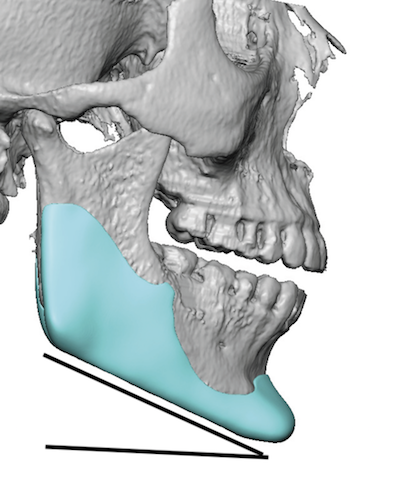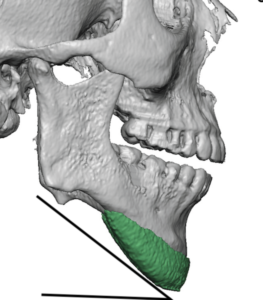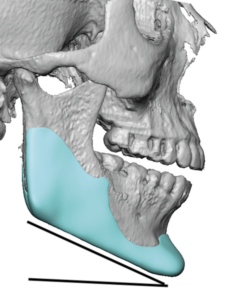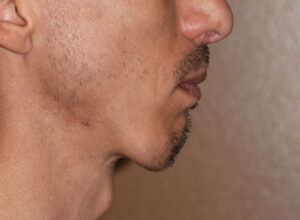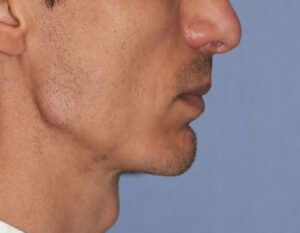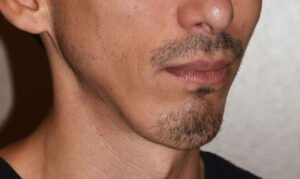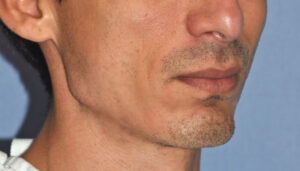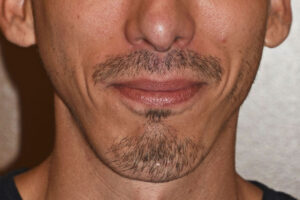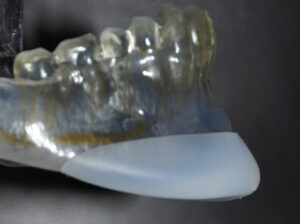
While many vertically short chins are associated with a flat mandibular plane angle, which works well with a vertically lengthening chin implant, not all are. In a vertically short chin which is associated a high jaw angle, although uncommon, a vertically lengthening chin implant will have an undesired aesthetic effect. It will make the jaw angle seem even higher and make the mandibular plane angle even steeper. Which illustrates the basic principle that contemporary lower facial aesthetics need to take a comprehensive view of the jawline and not just focus exclusively on the chin.
While the vertical lengthening chin implant is effective in the properly selected patient, it also needs to be positioned properly on the end of the chin bone to get the desired effect. If it is positioned too low it will hang off of the bone and have an excessive and abnormal appearing vertical lengthening effect.
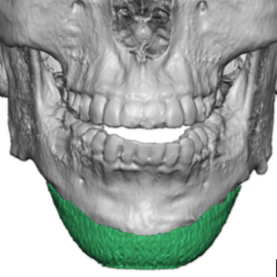
A custom jawline implant was designed to basically change his current mandibular plane angle to a better inclination. And effect that only a complete jawline implant design can do because of its linear connected shape.
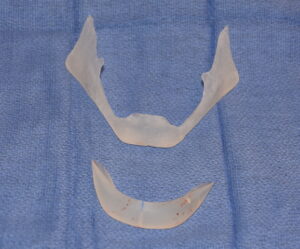

While chin implants can be of great benefit to the appearance of the lower face, the proper style/size mist be chosen and then they must be ideally positioned on the chin bone. While that sounds simple enough it is not rare to see to ill-advised choices which actually worsens the patient’s appearance. Such experiences can initiate the affected patient to seek a more compete lower facial augmentation that is preoperatively controlled by a computer designing process.
Case Highlights:
1) Vertical lengthening chin implants are not an appropriate choice in the horizontally short chin that is associated with high jaw angles and a steep mandibular plane angle.
2) Malpositioning or undesired aesthetic outcomes from chin implants is often a stimulus to seek out a complete jawline implant for an overall lower facial effect.
3) Creating a jawline implant with an indwelling undesired chin implant provides helpful design information for it.
Dr. Barry Eppley
Indianapolis, Indiana

